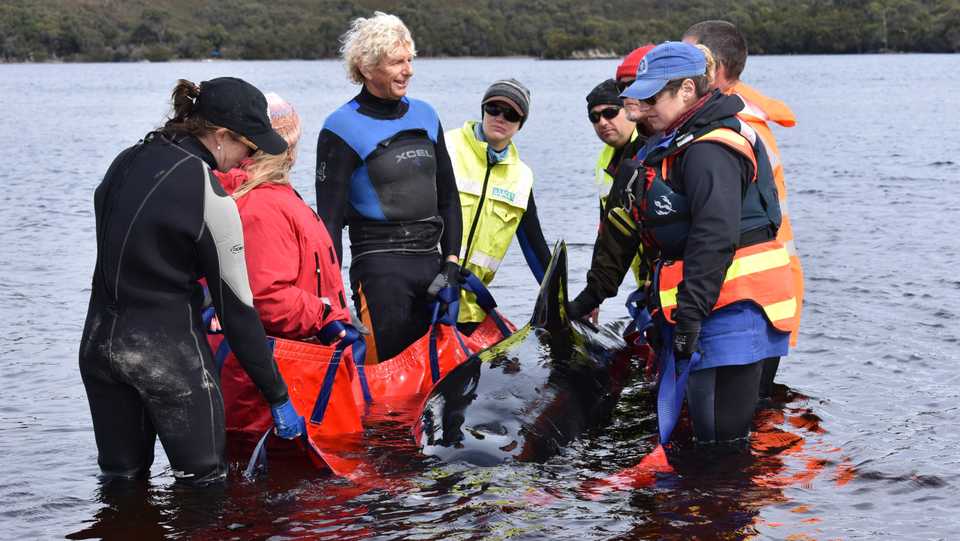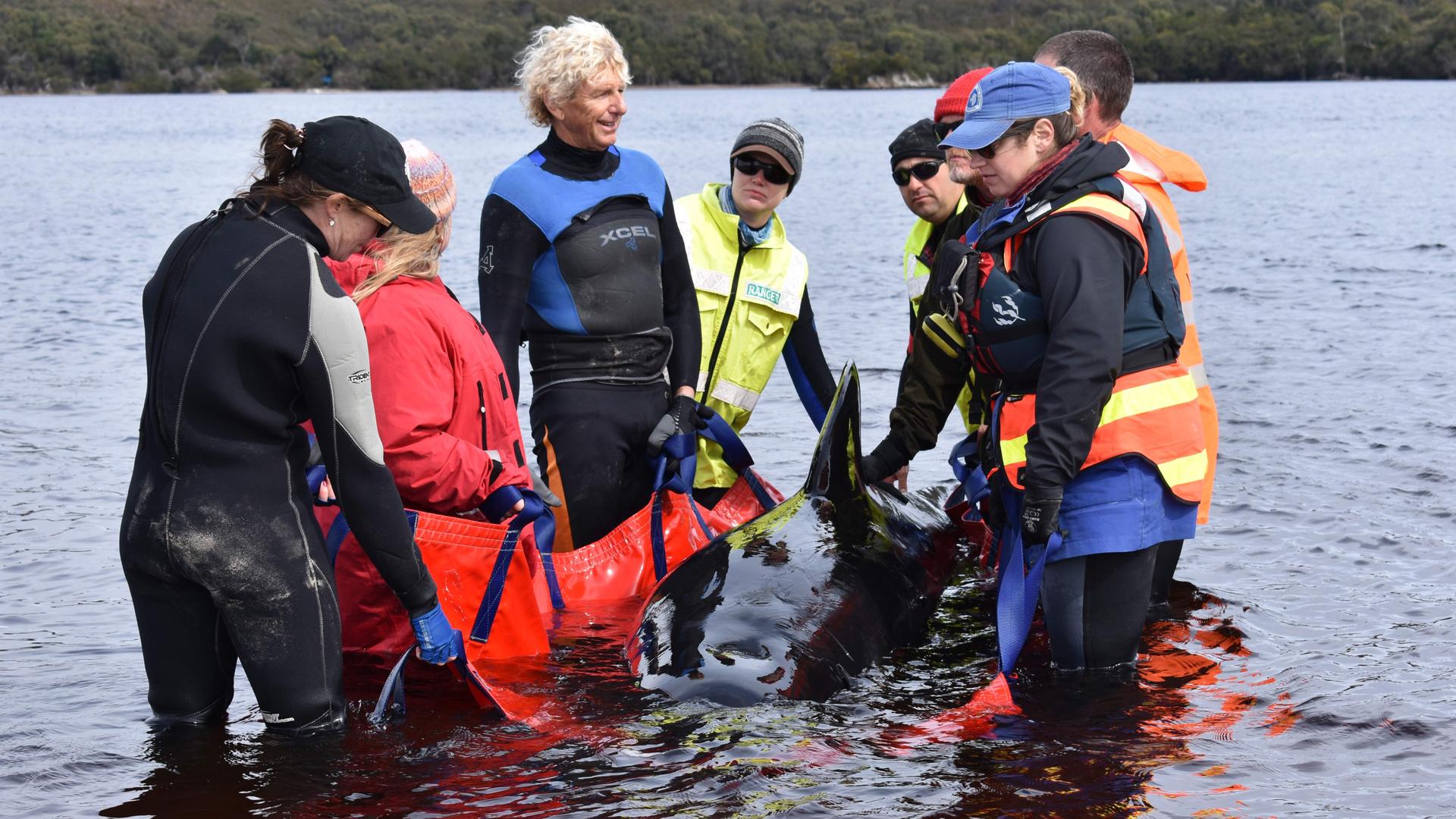
Australian rescuers have begun to euthanise some surviving whales from a mass stranding that has already killed 380 members of the giant pod.
A crew of around 60 conservationists and expert volunteers have spent days wading in the chilly waters of Macquarie Harbour, surrounded by the anguishing cries of dying whales.
Such is the level of distress that authorities said they had to carry out mercy killings of at least four whales.
While 88 pilot whales have been saved since the pod was discovered beached on Tasmania’s rugged western seaboard four days ago, the death toll is expected to rise as the window for rescue closes.
“We still have a few more live animals that we think are going to be viable to move,” said Tasmania’s Parks and Wildlife Service manager Nic Deka, praising the hard “yakka” (work) of rescuers who will continue until nightfall and into Friday.
“There is a likelihood that we’ll be continuing the rescue effort tomorrow … our focus has been on those that appear the most viable and have the most chance of success,” he said.
READ MORE: Rescuers find record 470 whales stranded in Australian harbour
Disposal of carcasses
An estimated 470 whales were discovered on Monday and Wednesday beached on the shore and sand bars along the remote west coast of the island state near the town of Strahan.
“We’re continuing with the rescue operation. We still have live animals that are viable for rescue,” Deka said. “But at the same time, we’re starting initial efforts with collection for disposal of carcasses.”
Deka said disposal at sea of the decomposing carcasses was the preferred option, but he was taking expertise advice.
Carlyon said some of the first whales rescued on Tuesday had beached again, but those guided back to sea on Wednesday appeared to have not returned. The rescued whales are marked to indicate which have returned.
“The 70 animals that have been refloated and released, we’re confident that most of the animals have got away,” Carlyon said. “Once they get into deeper water, they’re very hard to keep track of.”
READ MORE: Hundreds of stranded whales being rescued in Australia
Navigational error
Why the whales ran aground is a mystery. Theories include that the pod followed sick whales or made a navigational error.
Other researchers have suggested the pilot whales may have gone off track after being attracted by food close to the shoreline.
Marine biologist Carlyon said it was a “natural event” with strandings of the species regularly occurring in both southern Australia and neighbouring New Zealand.
“We do step in and respond in these situations, but as far as being able to prevent these occurring in the future, there’s really little that we can do,” he said.
Tasmania is the only part of Australia prone to mass stranding, although they occasionally occur on the Australian mainland.
Australia’s largest mass stranding had previously been 320 pilot whales near the Western Australia state town of Dunsborough in 1996.
Tasmania’s previous largest mass stranding involved 294 whales on the northwest coast in 1935.
READ MORE: Namibia launches probe after 86 dolphins die on beach
Level of distress
Some animals have resisted rescue or tried to return to the pod after being freed, becoming beached for a second time.
“It is emotional,” said rescuer Sam Thalmann. “There are animals swimming around, they are vocalising. We can see the bonds and the pairings within them.”
Pilot whales, which can grow up to six metres long and weigh a tonne, are highly social.
“Those four whales were euthanised earlier today” using firearms and specialist ammunition, said Tasmanian environment department marine biologist Kris Carlyon.
“We’ve got a few others that we currently giving veterinary assessment.”
“That’s based purely on animal welfare grounds,” he said.
READ MORE: Russia to free nearly 100 captive whales after outcry
Focusing efforts
The crews are now focusing efforts on a group of 20-25 partially submerged whales, using boats fitted with special slings to guide them back to the open ocean.
But, increasingly, attention is turning to how to safely dispose of the carcasses of the nearly 400 whales that have already died.
“Our preference is for disposal at sea. We’re still taking expert advice about where exactly the drop-off point may be,” said Deka.
Left where they are, the whales would “bloat and float”, causing a navigation hazard, polluting the bay and potentially attracting sharks and other predators, Deka said.
“The decomposition of such a large number of animals could actually affect oxygen levels in parts of the harbour, which could affect the marine life in those places.”
Devastated local community
A resident and cruise-boat worker who gave her name only as Monique said the local community has been devastated by witnessing scenes of such anguish.
“You could see that they were obviously suffering,” she told said.
“On the beach they were still … puffing, flipping about and you couldn’t really do much to help them.”
READ MORE: Over 300 whales die in New Zealand’s largest strandings in years










Discussion about this post